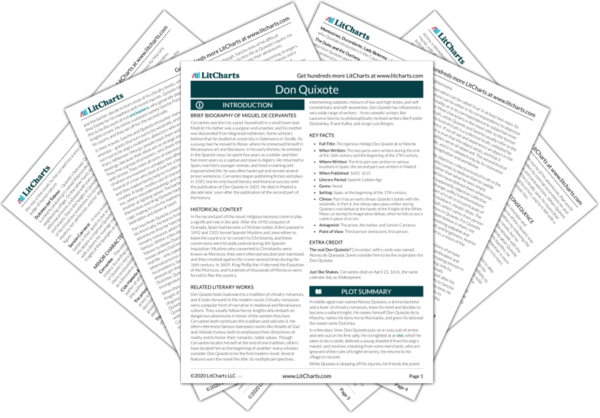's beloved. On the one hand, she is a hearty peasant girl named Aldonza de Lorenzo from a neighboring village. On the other hand, she is a beautiful, ethereal princess, endowed with every possible feminine virtue and beauty. She is the height of Quixote's fantasies, the center of his chivalrous worldview, his strength and justification. Her mystery, her perfection, and her absence make her a god-like figure.
